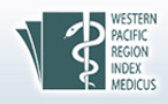Abstract:
Objective To explore the relationships among social adaptation, physical exercise, and mental health of adolescents, so as to provide theoretical basis for social adaptation and mental health improvement. Methods Longitudinal follow-up survey data were collected from 1 163 adolescents in Jinan City, Shandong Province in September 2021 (T1), January 2022 (T2), and June 2022 (T3) by cluster random sampling method. The relationship between social adaptability, physical exercise, and mental health of adolescents was analyzed through cross lagged analysis. Results There were significant sex differences in physical exercise and mental health among adolescents on T1, T2, and T3 (Z=-3.83, -3.43, -4.59; -12.45, -8.93, -8.72, P < 0.01), with male students had more physical exercise [35(28, 42), 36(33, 42), 38(35, 43)] and better mental health [12(12, 17), 17(17, 21), 14(14, 26)] levels than female students [33(27, 40), 35(31, 40), 36(33, 41); 9(9, 12), 12(12, 23), 12(12, 23)]. No similar sex difference in social adaptability (T1, T2, T3) [male: 22 (14, 24), 22 (14, 24), 22 (16, 24); female: 21 (11, 23), 20 (14, 24), 22 (17, 24)] (Z=-0.79, -1.19, -1.34, P>0.05). Temporal and synchronous correlations were found in social adaptability, physical exercise and mental health (r=0.18-0.67, 0.12-0.68, P < 0.01). Teenager physical exercise and mental health could predict social adaptability across time (βT1-T2=0.25, 0.13; βT2-T3=0.25, 0.06, P < 0.05), with a mediating effect on the impact path of physical exercise on social adaptability in psychological health (β=0.14, P < 0.05). Conclusions There is a causal relationship between physical exercise, mental health, and social adaptability among adolescents. Encouraging adolescents to actively participate in physical exercise and promoting mental health can effectively enhance their social adaptability.











